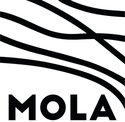Connaught Tunnel (Crossrail XSY11)
Museum of London Archaeology, 2019. https://doi.org/10.5284/1055120. How to cite using this DOI
Data copyright © Museum of London Archaeology, Crossrail Ltd unless otherwise stated
This work is licensed under a Creative Commons Attribution 4.0 International License.
Primary contact
Karen
Thomas
Head of Archive
Museum of London Archaeology
Resource identifiers
- ADS Collection: 2801
- DOI:https://doi.org/10.5284/1055120
- How to cite using this DOI
Introduction

This archive presents the results of a field evaluation carried out by the Museum of London Archaeology (MOLA) on the site of Connaught Tunnel, London E16, in the London Borough of Newham. The work was commissioned from MOLA by Crossrail Ltd. The sequence in the four trenches excavated is typified by basal sands grading up from the underlying gravels, overlain by peats and sealed by alluvial clays. The elevation of the surface of the Pleistocene / Early Holocene sands to the base of the sequence indicates that Trenches 1 and 4 are likely to be on the margins of discrete landscape features such as floodplain islands previously indicated around Custom House and others suggested around London City Airport. Trenches 2 and 3 appear to be within lower areas of migrating channels. The peat deposits contained discrete bands of organic clays; the thickness, position and number of which varied between the trenches and indicates different landscape positions or hydrology, with prehistoric and potentially historic channels evident in Trench 3. The top of the upper alluvial clays were likely to have been truncated in the past within some of the trenches and the thickness of the overlying made ground varied between the trenches. Trenches 1, 3 and 4 appeared to have been truncated but showed later possibly medieval to historic soil development before the addition of made ground. The alluvial clay in Trench 2 appears to have been least truncated with the survival of upper weathered alluvial deposits and very little made ground.
Further information about this site can be found in: A journey through time: Crossrail in the lower Thames floodplain by Graham Spurr with Mary Nicholls and Virgil Yendell.





